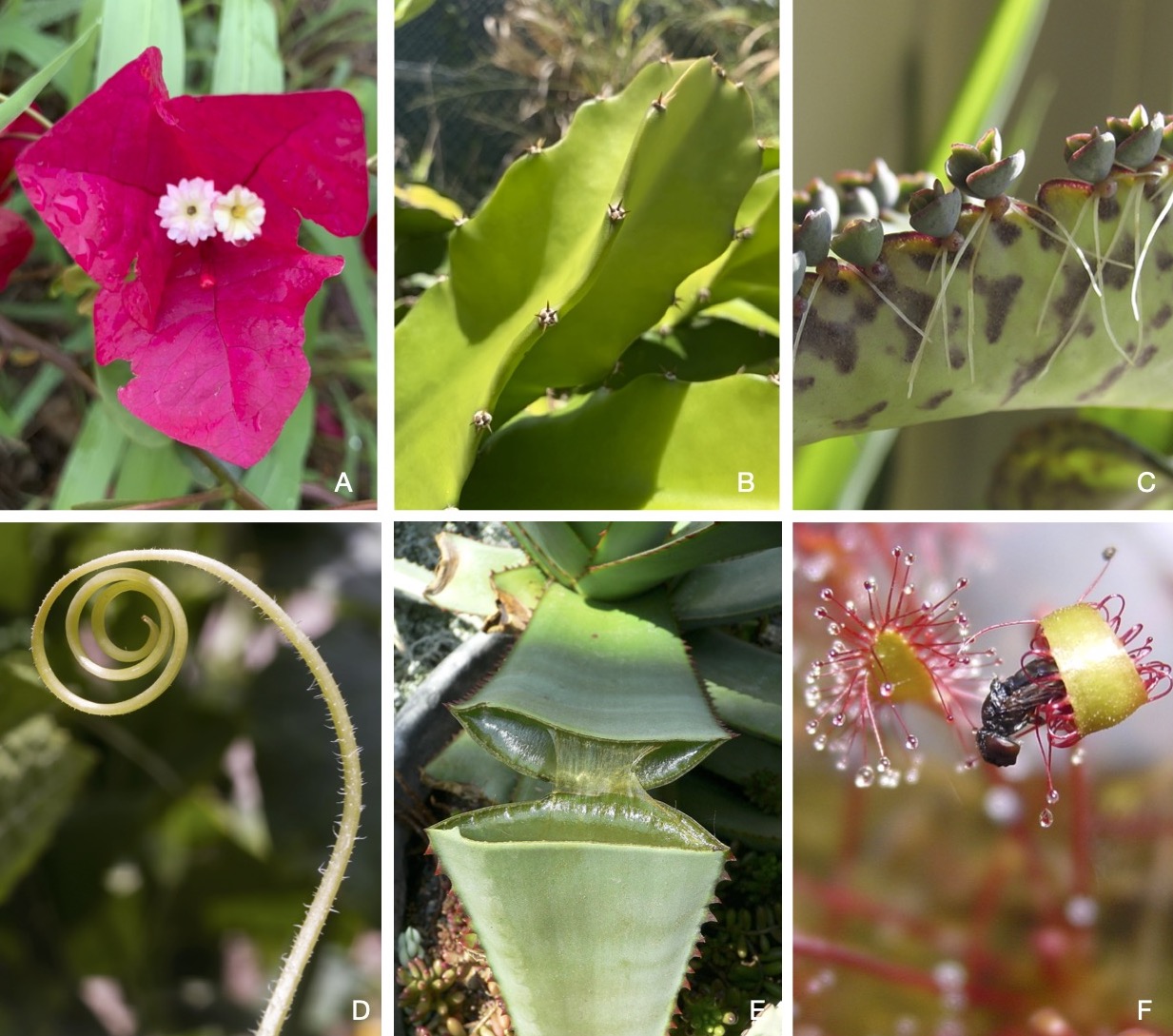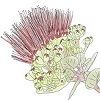4.4: Modified leaves
- Page ID
- 59231
Some plants have leaves that have been modified to do jobs besides photosynthesis. Here are some examples:
Bracts
Leaves in some species are modified to have different colors and look like petals. Their main function is to attract pollinators. In the case of Bougainvillea sp., flowers are small and creamy and are found in the middle of three pink petal-like modified leaves known as bracts (Figure \(\PageIndex{1}\)A).
Spines
Spines are modified leaves used for protection against herbivores. They have also evolved as a water-saving strategy in some plants. For example, most cacti, like dragon fruit, have spines instead of regular leaves (Figure \(\PageIndex{1}\)B).
Reproductive leaves
Some plants, like Bryophyllum daigremontianum, produce plantlets along the margins of their leaves. Eventually, the new plants fall off and become separate from the main plant. This is an example of asexual reproduction. The new plants are identical to the mother plant (Figure \(\PageIndex{1}\)C).
Tendrils
Tendrils are modified leaves used for climbing or support. For example, cucumbers use tendrils to climb and serve as a support structure for the plant (Figure \(\PageIndex{1}\)D).
Storage leaves
These leaves are modified to store water and/or nutrients for the plant. One example is aloe. There are about 500 species in this genus, and most of them are drought-resistant. Aloe vera is cultivated as a medicinal plant and the leaves are used to treat sunburn, among other things (Figure \(\PageIndex{1}\)E).
Trap leaves
Some leaves are modified to trap insects. These trapping leaves have evolved due to low nutrient availability in the soil where they grow, so plants with these leaves can gather nitrogen and other nutrients from the bodies of the insects they trap. For example, the Venus flytrap (Dionaea muscipula) and sundew (Drosera spp.) grow in bogs where nitrogen is not easily available. Drosera anglica or mikinalo is indigenous to the island of Kaua‘i. Its leaves are covered with glands that secrete mucilage used for trapping insects (Figure \(\PageIndex{1}\)F).



